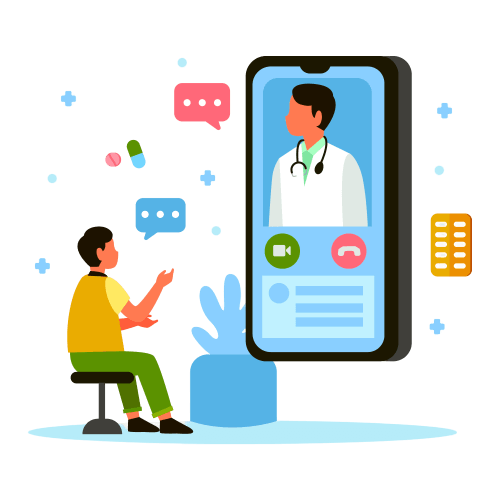projects
telemedicine
Telemedicine is the use of telecommunication and information technology to provide clinical
health care from a distance. It has been used to overcome distance barriers and to improve
access to medical services that would often not be consistently available in distant rural
communities. It is also used to save lives in critical care and emergency situations.
Telemedicine can be
beneficial to patients in isolated communities and remote regions, who can
receive care from doctors or specialists far away without the patient having to travel to
visit
them. Recent developments in mobile collaboration technology can allow healthcare
professionals
in multiple locations to share information and discuss patient issues as if they were in the
same place. Remote patient monitoring through mobile technology can reduce the need for
outpatient visits and enable remote prescription verification and drug administration
oversight,
potentially significantly reducing the overall cost of medical care. It may also be
preferable
for patients with limited mobility, for example, patients with Parkinson's disease.
Telemedicine
can also facilitate medical education by allowing workers to observe experts in their fields
and
share best practices more easily.
Although there were distant precursors to telemedicine, it is essentially a product of 20th
century telecommunication and information technologies. These technologies permit
communications
between patient and medical staff with both convenience and fidelity, as well as the
transmission of medical, imaging and health informatics data from one site to another.
Telemedicine also can eliminate the possible transmission of infectious diseases or
parasites
between patients and medical staff. This is particularly an issue where MRSA is a concern.
Additionally, some patients who feel uncomfortable in a doctors office may do better
remotely.
For example, white coat syndrome may be avoided. Patients who are home-bound and would
otherwise
require an ambulance to move them to a clinic are also a consideration.


